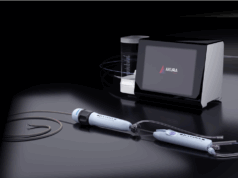The US Food and Drug Administration (FDA) has approved Daiichi Sankyo’s Savaysa (edoxaban), an oral, once-daily selective factor Xa inhibitor, to reduce the risk of stroke and systemic embolism in patients with non-valvular atrial fibrillation.
In ENGAGE AF-TIMI 48, Savaysa was non-inferior to warfarin in the overall study population for the primary efficacy endpoint of stroke or systemic embolism. As stated in the US label, Savaysa should not be used in non-valvular atrial fibrillation patients with creatinine clearance levels greater than 95 mL/min because in that population there is an increased risk of ischaemic stroke compared to warfarin. Patients with creatinine clearance levels less than or equal to 95 mL/min represented 77% of the patients studied. In those patients, Savaysa 60mg (30mg dose reduced) reduced the risk of stroke and systemic embolism when compared to warfarin (hazard ratio [HR], 0.68; 95% confidence interval [CI], 0.55 to 0.84), and the rates of cardiovascular death with Savaysa and warfarin were 2.95% per year vs. 3.59% per year, respectively. The FDA also approved Savaysa for the treatment of deep vein thrombosis and pulmonary embolism following 5-10 days of initial therapy with a parenteral anticoagulant.
“The approval of Savaysa demonstrates our commitment to providing new treatment options for cardiovascular diseases with significant unmet needs and reinforces our leadership in factor Xa inhibition research, which began more than 30 years ago,” said Joji Nakayama, representative director, president and chief executive officer, Daiichi Sankyo. “We look forward to making Savaysa available to patients in the USA with non-valvular atrial fibrillation and venous thromboembolism, two serious conditions that are expected to double in prevalence by mid-century.”
“Savaysa is an important new anticoagulant in the USA and in the ENGAGE AF-TIMI 48 trial, Savaysa has been shown to reduce the risk of stroke and systemic embolism with significantly less major bleeding for patients with non-valvular atrial fibrillation, and in the Hokusai-VTE trial, to treat deep vein thrombosis and pulmonary embolism with significantly less clinically relevant bleeding versus warfarin, the most commonly prescribed anticoagulant,” said Glenn Gormley, senior executive officer and global head of research and development, Daiichi Sankyo and executive chairman and president, Daiichi Sankyo. “In addition, Savaysa offers the convenience of once-daily dosing, no need for routine blood monitoring and the flexibility to be taken with or without a meal.”
The approved indications in the USA for Savaysa are based on data from the ENGAGE AF-TIMI 48 and Hokusai-VTE studies. The most common side effects observed in clinical trial participants were bleeding and anaemia. Savaysa increases the risk of bleeding and can cause serious and potentially fatal bleeding.
In ENGAGE AF-TIMI 48, Savaysa had significantly less major bleeding in patients with non-valvular atrial fibrillation, both in the overall study population (HR, 0.80; 95% CI, 0.70 to 0.91, p<0.001) and in patients with CrCL less than or equal to 95 mL/min (HR, 0.84; 95% CI, 0.73 to 0.97). In addition, in the approved population, there were lower rates of intracranial haemorrhage with Savaysa compared to warfarin in non-valvular atrial fibrillation patients (0.5% vs. 1% per year, respectively; HR, 0.44, 95% CI, 0.32 to 0.61). In ENGAGE AF-TIMI 48, there was a significant increase in gastrointestinal bleeding events in the approved population compared to warfarin of 1.8% vs. 1.3% per year, respectively (HR, 1.4; 95% CI, 1.13 to 1.73).
In the overall Hokusai-VTE study population, once-daily Savaysa 60mg was non-inferior to warfarin for the primary efficacy endpoint of recurrence of symptomatic venous thromboembolism (3.2% vs. 3.5%, respectively; HR, 0.89; 95% CI, 0.70 to 1.13). In addition, Savaysa demonstrated a significant 19% lower rate of clinically relevant bleeding in patients with venous thromboembolism compared to warfarin (8.5% vs. 10.3%, respectively; HR, 0.81; 95% CI, 0.71 to 0.94, p=0.004).













